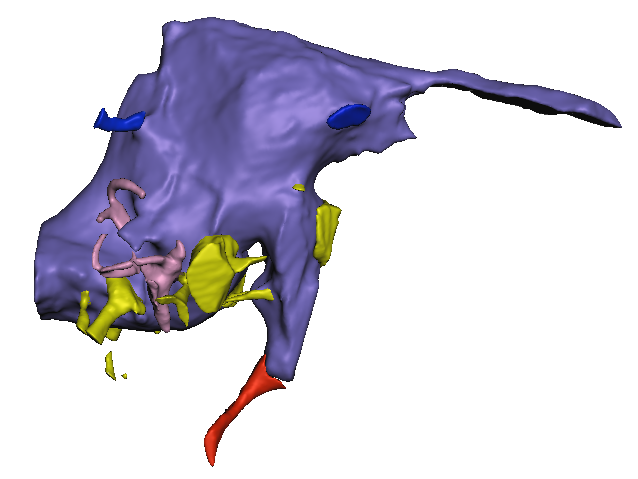
Braincase and Neuroanatomy of Ceratosuchops inferodios (IWCMS 2014.95.1-3)
Project
ID: 000491949
Public
The digital reconstruction of neurocranial endocasts has elucidated the gross brain structure and potential ecological attributes of many fossil taxa, including Irritator, a spinosaurine spinosaurid from the “mid” Cretaceous (Aptian) of Brazil. With unexceptional hearing capabilities, this taxon was inferred to integrate rapid and controlled pitch-down movements of the head that perhaps aided in the predation of small and agile prey such as fish. However, the neuroanatomy of baryonychine spinosaurids remains to be described, and potentially informs the condition of early spinosaurids. Using micro-computed tomographic scanning (μCT), we reconstruct the braincase endocasts of Baryonyx walkeri and Ceratosuchops inferodios from the Wealden Supergroup (Lower Cretaceous) of England. We show that the gross endocranial morphology is similar to other non-maniraptoriform theropods, and corroborates previous observations of overall endocranial conservatism amongst more basal theropods. Several differences of unknown taxonomic utility are noted between the pair. Baryonychine neurosensory capabilities include low frequency hearing and unexceptional olfaction, whilst the differing morphology of the floccular lobe tentatively suggests less developed gaze stabilisation mechanisms relative to spinosaurines. Given the morphological similarities observed with other basal tetanurans, baryonychines likely possessed similar behavioural sophistication, suggesting that the transition from terrestrial hypercarnivorous ancestors to semi-aquatic “generalists” during the evolution of Spinosauridae did not require substantial modification of the brain and sensory systems.
| Identifier | Taxonomy | Total Media | Date Added | Source |
|---|---|---|---|---|
| miwg:IWCMS 2014.95 | Ceratosuchops inferodios | 5 | 2023-01-16 | User Created |